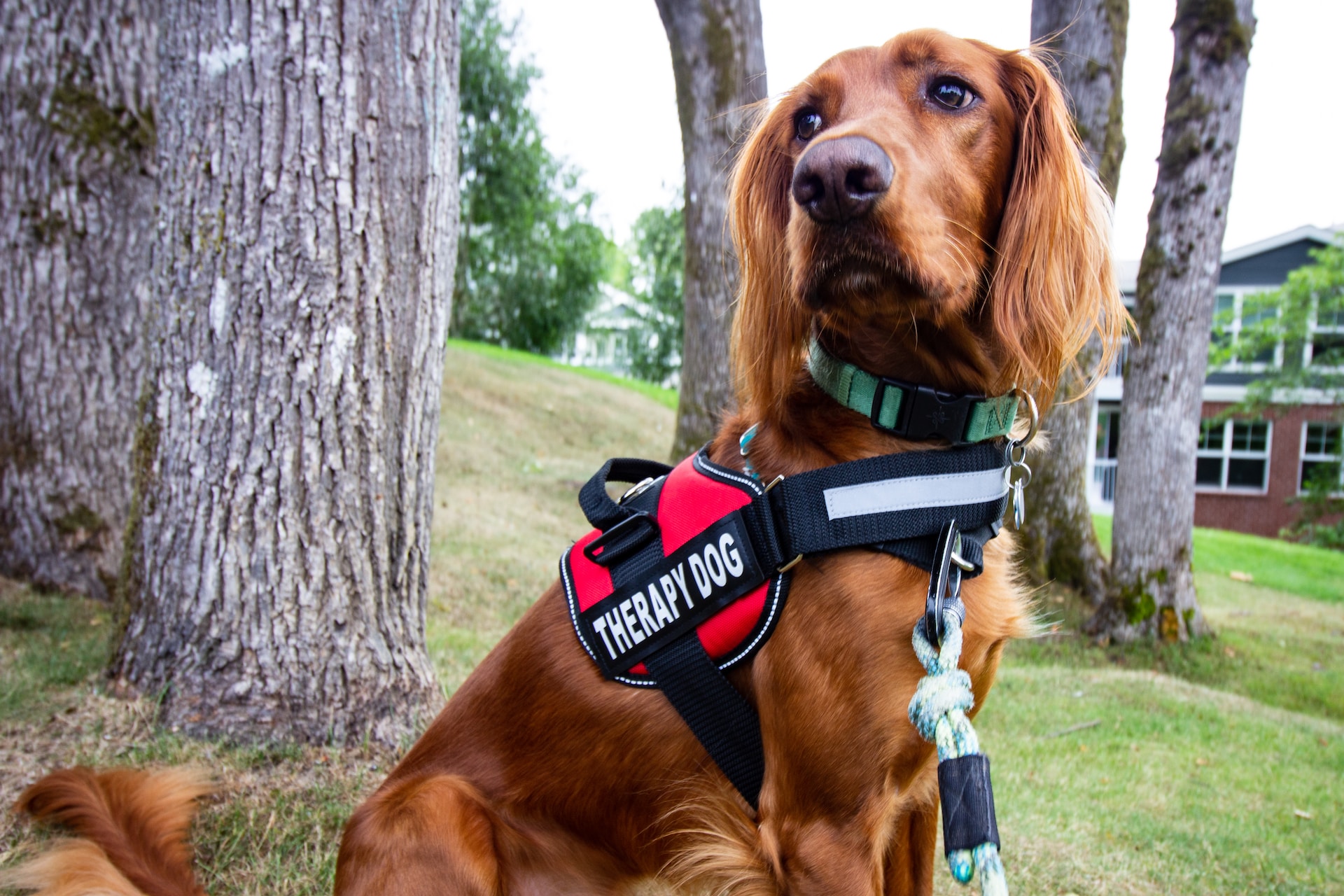
The role of the emotional support that animals provide for the benefit of many people around the world is indisputable. Sometimes even their presence itself is enough to provide comfort and calm you down.
Many handlers can not imagine being separated from their furry friends for a long time, and they will do their best to can bring their dogs everywhere they go- grocery stores, public facilities, and onboard.
The New Regulations and Their Impact on the Emotional Support Animals
In many of our articles, we explained what the difference between a pet and a service animal is, as well as the different types of service animals. Service animals are not deemed pets, as they are trained to perform specific tasks for the benefit of people with a disability. Hence, service animals must be granted public access rights, including onboard.
At the beginning of 2021, the U.S. DOT (U.S. Department of Transportation) changed the rules governing service animals on planes. One of the most important changes that affected many handlers of Emotional Support Animals is that these animals are no longer considered service animals, as they are not trained to provide specific tasks. Hence, their rights get limited and their presence in the passenger cabin is no longer allowed.
The regulations changing led to the strong intention of many dog owners to register their Emotional Support Animals as Service Animals, especially as Psychiatric Service Animals. The reason for that is that the new regulations require the Psychiatric Service Animals to be treated the same way as other service animals and to be granted public access rights.
Considering the things mentioned above, the following question arises:
Can an Emotional Support Animal Become a Service Animal?
The answer is Yes. However, there are strict requirements on how this can happen.
Since the main difference between an ESA and a service animal is the specific tasks that service animals are trained to perform, an ESA must be individually trained to perform these specific tasks for the benefit of a person with a disability in order to can be considered a service animal. It means that the emotional support that ESAs provide and the calming effect that their presence has on the emotional state of their handlers are not enough reason for them to have the status of a service animal. ESAs need to go through training and their handler may be required to answer two questions asked by business owners or airlines representatives:
1. Is this a service dog due to a disability;
2. What tasks has the dog been trained to perform?
Some of the essential tasks that Psychiatric Service Dogs are trained to perform are:
• Deep Pressure Therapy- dogs have been trained to nudge their handlers or to sit in their laps in order to provide a calming effect through tactile stimulation.
• Retrieval- dogs can also be trained to bring prescribed medication to their handlers when hearing a particular command.
• Interfere with a harmful behavior- one of the most important tasks that PSDs can be trained to perform is to prevent their handlers from having a harmful behavior.
• Panic Prevention- some people have panic attacks or feel extreme anxiety, especially while in public. PSDs can calm their handlers down by providing the so-called “grounding”. This means that they can back their handler back to reality through face-licking or pawing or jumping in the handler's lap.
• Crowd control- PSDs can increase the distance between their handlers and passerby in order to prevent stress and anxiety that may occur in crowded places.
You already know that an Emotional Support Animal needs to perform specific tasks for the benefit of an individual with a disability to be recognized as a service animal. With that in mind, we would like to go to the second requirement:
People who want to change the status of their ESAs to PSDs must be able to prove that they are diagnosed with a disability.
Handlers Need to Be Diagnosed With a Disability
According to ADA (Americans with Disabilities Act):
“To be protected by the ADA, one must have a disability, which is defined by the ADA as a physical or mental impairment that substantially limits one or more major life activities, a person who has a history or record of such an impairment, or a person who is perceived by others as having such an impairment”.
In other words, people must be unable to handle some situations in their life without the help of a service dog, i.e.: they have panic attacks while in public or crowded places, and can not go to the store without their dog. Their ability to function normally is impaired in a way that prevents them from fulfilling their daily tasks.
One of the main functions that service animals have is to help their handlers regain their independence by assisting them on a daily basis.
The disability of the handler must be diagnosed by a medical professional in order for them to comply with the ADA guidelines.
Here comes the question:
Are handlers required to provide a letter issued by a medical professional as proof of their condition?
The U.S. Department of Transportation requires handlers to provide only two documents when traveling with a service animal:
1. A DOT form attesting the animal’s health, behavior, and training;
2. A DOT form confirming that the animal is either unable to relieve itself or that this is done in a sanitary manner if the animal is on a flight of 8 hours or more.
Although only these two documents may be required, the airlines' representatives may require additional documentation if they doubt the legitimacy of the service animal.
We highly recommend that you have such a letter if you intend to travel accompanied by your service animal, in order to be able to prove his/her legitimacy.
We want to note that attempts to fake such letters in order to present an animal as a service animal is considered a law violation in many states and fees can be charged.
Public Access Training
The third important condition that must be fulfilled so that handlers can turn their ESAs into PSDs is the public access training.
Since service dogs must be granted access to public facilities, handlers need to ensure that their dog will behave properly while in public.
Service dogs may be denied public access if they behave disruptively and cause damages.
Handlers must control their dog at all times, the dog must be on a leash and not disturb other passerby or clients when in a public facility. Dogs are not allowed to sniff around, bark towards people (they are allowed to bark if this is a part of their tasks), be disruptive or aggressive. They need to be trained to not relieve themselves in public spaces. Service Dogs must stay calm and focused regardless of the situations, sounds, people, or animals they meet and fulfill the commands given by their handler.
If an Emotional Support Animal Becomes a Psychiatric Service Dog, Must He/She Start Wearing a Vest?
ADA does not require service animals to wear a vest or a tag.
However, wearing a vest is considered helpful for handlers, as it is a good identification sign. It may avoid unwanted interactions with passersby who want to pet the dog and distract him/her.
The UK and the EU do not require service animals to wear a vest.
However, some provinces in Canada may require service animals to wear a vest.
Please remember to check the local legislation prior to travel.
Do You Need to Certify Your Dog, Once He/She Becomes a Psychiatric Service Dog?
According to ADA:
“Q17. Does the ADA require that service animals be certified as service animals?
A. No. Covered entities may not require documentation, such as proof that the animal has been certified, trained, or licensed as a service animal, as a condition for the entry”.
Despite the fact that ADA does not require a certificate, the service dog regulations may vary on a state/province level depending on the country.
Some countries/states/provinces do not accept all certificates and require service dogs to be trained only be recognized organizations.
This means that if you want to turn your ESA into PSD so that he/she can accompany you onboard, you need to check very carefully the regulations of the countries of origin, all transit countries (if there are such), the country of destination, as well as the service dog policy of the particular carrier.












